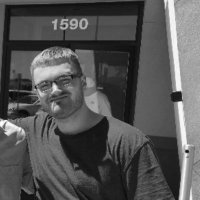Better Call Saul: The Best Individual Shots
Like Breaking Bad before it, Better Call Saul is a visually beautiful series. So here are some still frames that speak volumes.
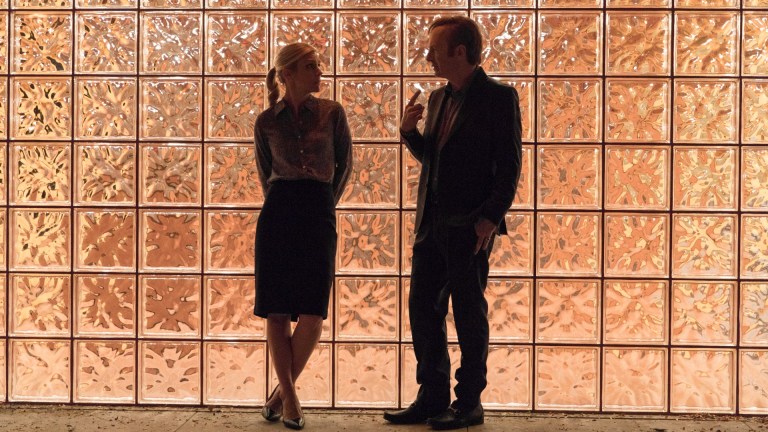
This article contains spoilers for Better Call Saul through season 6 episode 3.
Better Call Saul is one of the best shows in television history for a myriad of reasons. From the impeccable performances to the brilliant call backs to Breaking Bad, the spinoff has etched its name as one of the most artistic endeavors ever put on the small screen.
Of all the elements that makes the show special, however, the cinematography has got to be at the top of the list. Using a variety of POV shots, pan-outs to the New Mexico skies, and brilliant uses of lighting, there is nothing quite like the type of filmmaking that is used on Better Call Saul.
With that in mind, let’s discuss the 15 best shots in the show below, most of which are sourced and compiled from the Better Call Saul (In Frames) Twitter account. Tell us if we missed any of your favorites!
Season 1 Episode 7: “Bingo”
Mike Ehrmantraut (Jonathan Banks) is one of the most beloved characters in the Breaking Bad universe. This crafty shot of him sitting underneath a list of wanted felons might be missed by some fans, but those who enjoy irony should get a kick out of it. Mike has probably done more illegal things than everyone above him, but he always finds a way to turn criminal life into something he views as mundane. It catches up to him eventually, but here he brilliantly stands out and blends in with all of the other convicts.
Season 2 Episode 5: “Rebecca”
This awesome overview shot of HHM’s banner towering over Kim Wexler (Rhea Seehorn) after she gets Mesa Verda as a client is a grave reminder of how she needs to get out from under Howard Hamlin (Patrick Fabian) and grow her own wings. It’s amazing to see how much she’s done just that in the ensuing seasons of the show, for better and for much worse.
Season 2 Episode 9: “Nailed”
This clever reference to the Beatles’ Abbey Road album cover is a great way to analogize how Jimmy views his plucky band of film student misfits. Jimmy loves a bit (or a bunch) of theatrics, becoming the rock star in every room he enters. He isn’t quite to his Saul Goodman persona yet at this point, but he’s always had the face and the attitude to take over whatever streets he walks on.
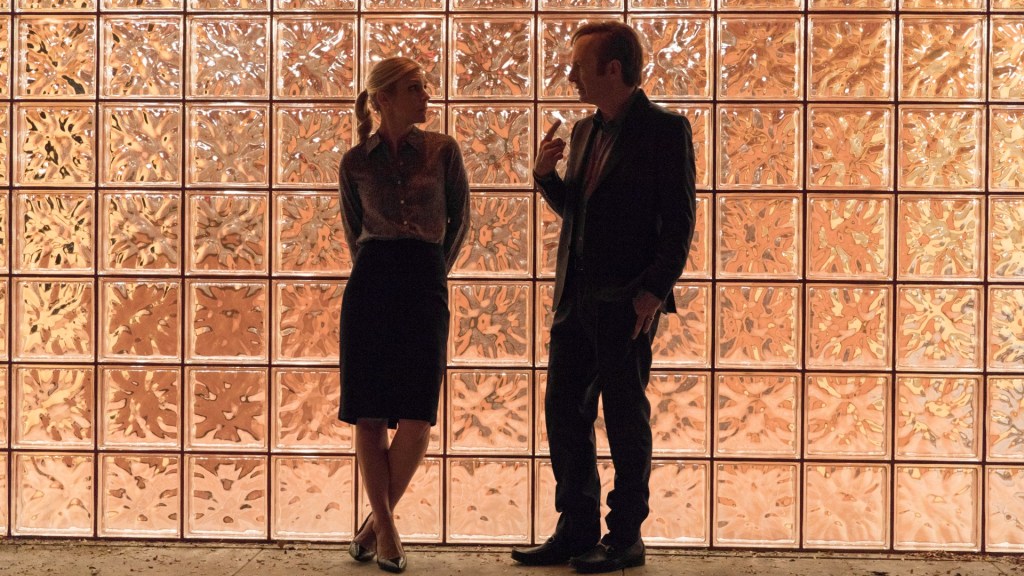
Season 3 Episode 3: “Sunk Costs”
Jimmy and Kim love to smoke together. To the audience, this is their unique way of being intimate. It replaces scenes in other shows in which sex might happen. This iconic shot is of the couple’s most important cigarette session in the show, in which Kim chalks up her connection to Jimmy as the fallacy of sunk costs after brainstorming how to get him out from under Chuck’s shadow in court.
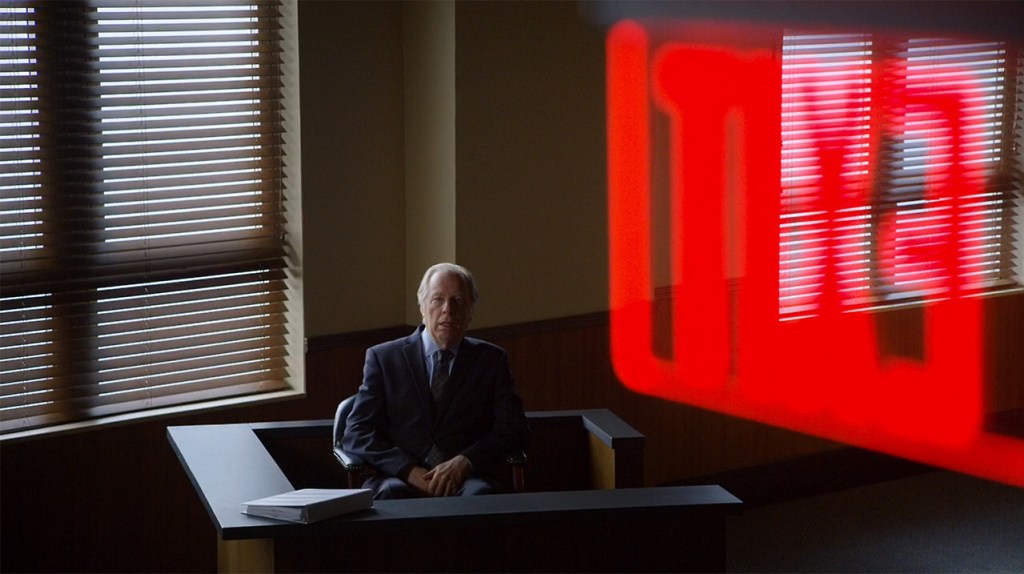
Season 3 Episode 5: “Chicanery”
“Chicanery” might be the show’s best episode, and it ends with Chuck staring up at the electrical exit sign on the wall. After embarrassing himself in front of the judges who are supposed to end Jimmy’s legal career, the older McGill brother comes to grips with the fact that there is no exit from his younger kin’s methods of practicing the law. It simultaneously serves as a symbol that there is no escape from his electromagnetic sensitivity disorder, and the audience understands that these two issues may be one in the same for Chuck.
Season 3 Episode 8: “Slip”
Mike is ubiquitous. It feels like there isn’t a problem he can’t solve, except for the one inside his own head. Oftentimes Mike is trying to discover why he gets involved with the criminals and lowlifes that he mingles with, and unfortunately he feels deep regret at times for innocent deaths that he indirectly causes. In this frame we see Mike trying to frantically find the dead body of a man who died in the desert as collateral for one of Mike’s schemes to screw over the Salamanca’s in the previous season. His immense guilt is splattered all over the New Mexico wastelands.
Season 3 Episode 10: “Lantern”
This eerie shot of Chuck leaving HHM, the firm he built, for the final time is a perfect demonstration of how someone’s career often means nothing in the larger picture of life. Chuck never let other people inside of his head, pushing everybody away until he was alone in a mass crowd of colleagues of acquaintances. His death by suicide later in the episode shows us how the end of his law career signaled that there was no reason left to live.
Season 4 Episode 1: “Smoke”
There’s nothing more morbid to look at than the aftermath of a house burning down. And when we know exactly how and why it happened to Chuck’s, with Jimmy ominously hanging around in the distance, it adds another layer to the story.
Season 4 Episode 10: “Winner”
Mike has a hard time connecting with other people. When he finally makes a friend in German contractor Werner Ziegler (Rainer Brock), he realizes that personal feelings can’t interfere with the bottom line of Gus’s business ventures. Werner tried to play it loose with Gus, and he almost disclosed pertinent information about the meth superlab to Lalo Salamanca (Tony Dalton). The consequences? Getting shot under the stars. Peter Gould and his insanely talented team of directors found a way to show the death without showing the gore. This long-view shot almost makes the cold-blooded murder seem pretty.
Season 5 Episode 2: “50% Off”
Jimmy and Howard have always been on opposite sides of the legal spectrum. Jimmy is a loose gun, and Howard plays it safe (so far). This ingenious shot divides them by the literal doors they walk through to practice law, and it’s the type of camera work that even movie directors would be proud of. It’s symbolism displayed at the highest degree.
Season 5 Episode 3: “The Guy For This”
The ice cream cone being devoured by ants after Jimmy has to leave it on the ground is one of those scenes where everyone knows that the directors are trying to be artsy, and it works all the better for it. Who knows what it actually means. Perhaps it’s representative of Jimmy getting eaten up by the cartel, as he’s now walking on thin ice in that department.
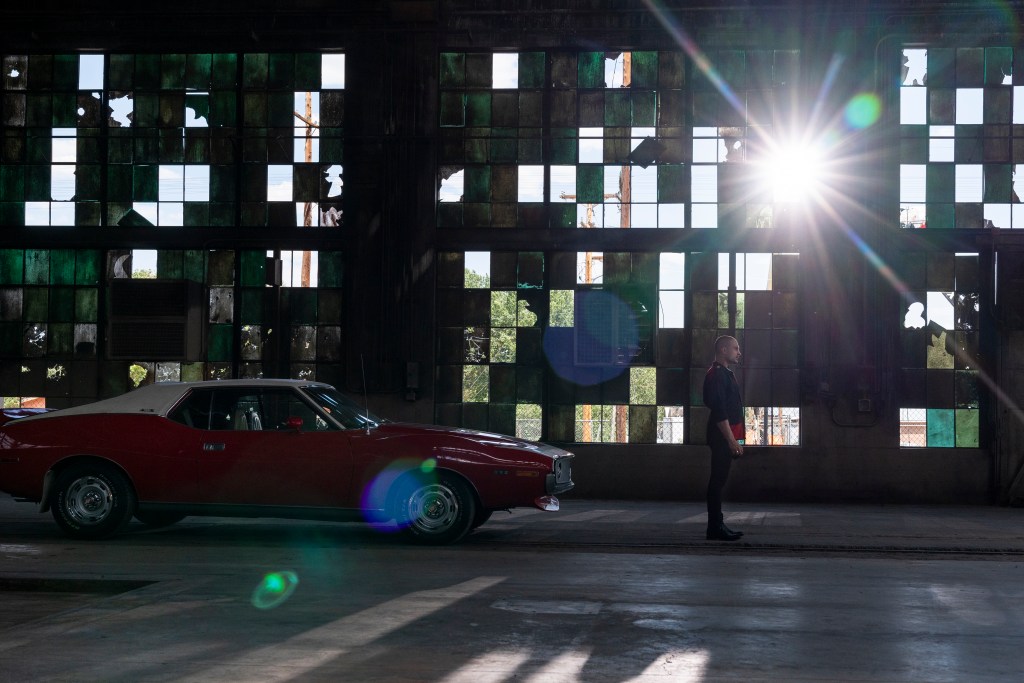
Season 5 Episode 6: “Wexler v. Goodman”
Nacho is a man who has been running from his past for a couple of seasons by this point. This somber shot of him waiting in a tattered back alley with shattered windows is a great reminder to the audience of just how much everything is caving in on him. With Gus using him as a chess piece and Lalo pulling him closer to the Salamanca family, there’s no place to hide.
Season 5 Episode 7: “JMM”
By this point in the fifth season, Jimmy is becoming overwhelmed with his Jimmy McGill/Saul Goodman push and pull. He can’t separate the two personas any longer, and this frame of him only showing half of his true face, with the other half distorted on the metal wall, serves as a grave reminder of what our protagonist is transforming into.
Season 6 Episode 1: “Wine and Roses”
As Jimmy and Kim discuss their plans to ruin Howard’s career, the camera pans out to a shot of bars along the restaurant windows that could easily be interpreted as prison restraints. And who knows? Maybe that’s exactly where Jimmy ends up after his stint as Gene Takovic in Nebraska.
Season 6 Episode 3: “Rock and Hard Place”
This show has always given great attention to what they put in the pre-credit opening scene, and this one was an especially poignant frame. The audience doesn’t know yet that this beautiful flower symbolizes Nacho’s death, but they do by the end of the hour.
